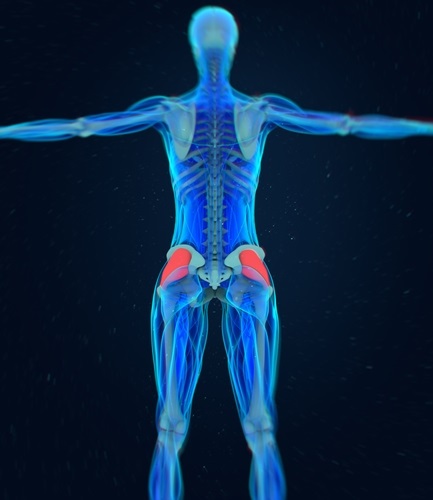What Does Fascia Mean to Your Health?

What does fascia mean in its most basic understanding? The dictionary defines it as a “thin sheath of fibrous tissue enclosing a muscle or other organ;” but, that definition doesn’t encompass the full dynamic and current understanding of what it is and why it’s so important to maintaining a healthy body.
What Is Fascia?
We used to believe that fascia was a thin layer of tissue running just beneath the skin, and weakness in the fascia netting was credited for cellulite dimples. But, this amazing tissue is everywhere in your body, branching out from the skin, cradling all of your organs, bones, muscles, nerves, veins and arteries.
We’re not talking about individual strings or webs. Imagine one piece of strong thread twisting through your body and covering everything from your brain and heart to the tiniest bones. It forms a glorious collagen network holding the body together and defining its shape. In fact, every cell in your body is connected by this amazing web of tissue.
What Does Fascia Mean to Every Cell in Your Body?
On an even deeper level, it is the connection between remote cells and your nervous system. Every cell in your body isn’t in direct contact with your nerves, yet every cell knows what to do in order to keep your body in motion. Those messages are traveling through this sensory tissue, connecting everything together so that your body's alignment and fluidity are maintained.
Fascia is also important to spreading nutrients to every cell of your body, and it is central to the process of removing waste from your cells.
Why Is Fascia Important to Your Health?
Healthy babies are born with well-hydrated, flexible fascia that has the ability to stretch and twist as the body moves. As we grow older, many things can erode that healthy condition, such as:
 What happens in one part of your body affects other parts to varying degrees.
What happens in one part of your body affects other parts to varying degrees.· Inflammation
· Injuries
· Poor posture
· Overuse & stress injuries
· Emotional trauma
· Scarring
· Surgeries
Think of a child falling off a bike and scraping her knee or an adult jamming his toe on a wooden table leg. Each time you strain a muscle, sustain an injury, live under constant stress, or undergo surgery to fix a medical issue, you’re adding tension to the tissue and changing its character.
Because fascia is one continuous piece of tissue, what happens in one part affects all the other parts of your body to varying degrees.
For example, due to injuries or damage, we may begin to use compensatory movements, whether consciously or unconsciously, that stresses other parts of the body. Over time, the compensation can cause your fascia to lose much of its flexibility, and restrict muscle and joint movement.
Damage to the fascia can introduce tension in the body and lead to pain. Inflammation, damage, and tension to fascia that isn’t easily picked up in medical scans may very well be the reason why many people suffer from pain in various parts of their bodies that doctors can't explain.
Massage for Fascia Release
If tension is causing pain and discomfort, myofascial release therapy is often an effective treatment. This is a form of therapy that identifies trigger points from which the stiffness and pain stems. Pressure is applied to that area of the body, smoothing out and softening the tissue. When the exact trigger point is unknown, larger areas are often treated for effective pain relief.
You might consider seeing a massage therapist or chiropractor trained in fascia release treatments. As an alternative, using a foam roller at home can be quite effective.

How to Know When You May Need Fascial Massage
If you sustain any type of injury, from a strained muscle to whiplash, you may benefit from myofascial therapy. If your muscles feel tight, you don’t have the range of motion that you once enjoyed, your joints feel stiff, or you have unexplained pain, you may consider giving release a chance. Myofascial massage may help you recover after surgery, or added to a treatment plan for a chronic medical condition.
Myofascial release is also used as preventative treatment. The goal is to keep the tissue loose and ready to support the fluid motion required for an active lifestyle. Whether you’re active or sedentary, keeping your fascial tissue healthy could help you maintain your mobility as you get older.
Testimonial Evidence
I have struggled with and cried many tears because of neck pain, back pain, and debilitating migraines. The money spent on chiropractors, therapists and doctors that included adjustments, massages, shots, heat and cold only offered temporary relief.
Recently, my physical therapist started me on a yoga regimen, specifically targeted to stretch the tight facia in my body. The reduction in pain was like a gift from God! The exercises have changed my world.
Although I have only been doing the exercises for a couple of months, I expect that continuing a daily yoga routine will reverse some of the problems resulting from tight facia.
I am not a young woman, and to see these changes so quickly is amazing! I am sold on the health benefits of yoga. ~Angela Baum, Age 61
More Topics That May Interest You
Some of the advertisers on my website are affiliate partners, which means that I may receive a small commission from any sale, at no extra cost to you.
For example, the Amazon affiliate advertising program is designed to provide a means for sites to earn fees by advertising and linking to amazon.com.
Your tips and purchases help to support this free-information website.
Thank you.
The content of this website is for informational purposes only and not intended to be taken as a replacement for professional medical advice, care, diagnosis or treatment by a doctor, dietitian, physical therapist, nutritionist or fitness instructor.
DO NOT BEGIN ANY EXERCISE PROGRAM WITHOUT CHECKING WITH YOUR DOCTOR FOR UNDERLYING CONDITIONS THAT MAY PREVENT YOU FROM DOING SO.






